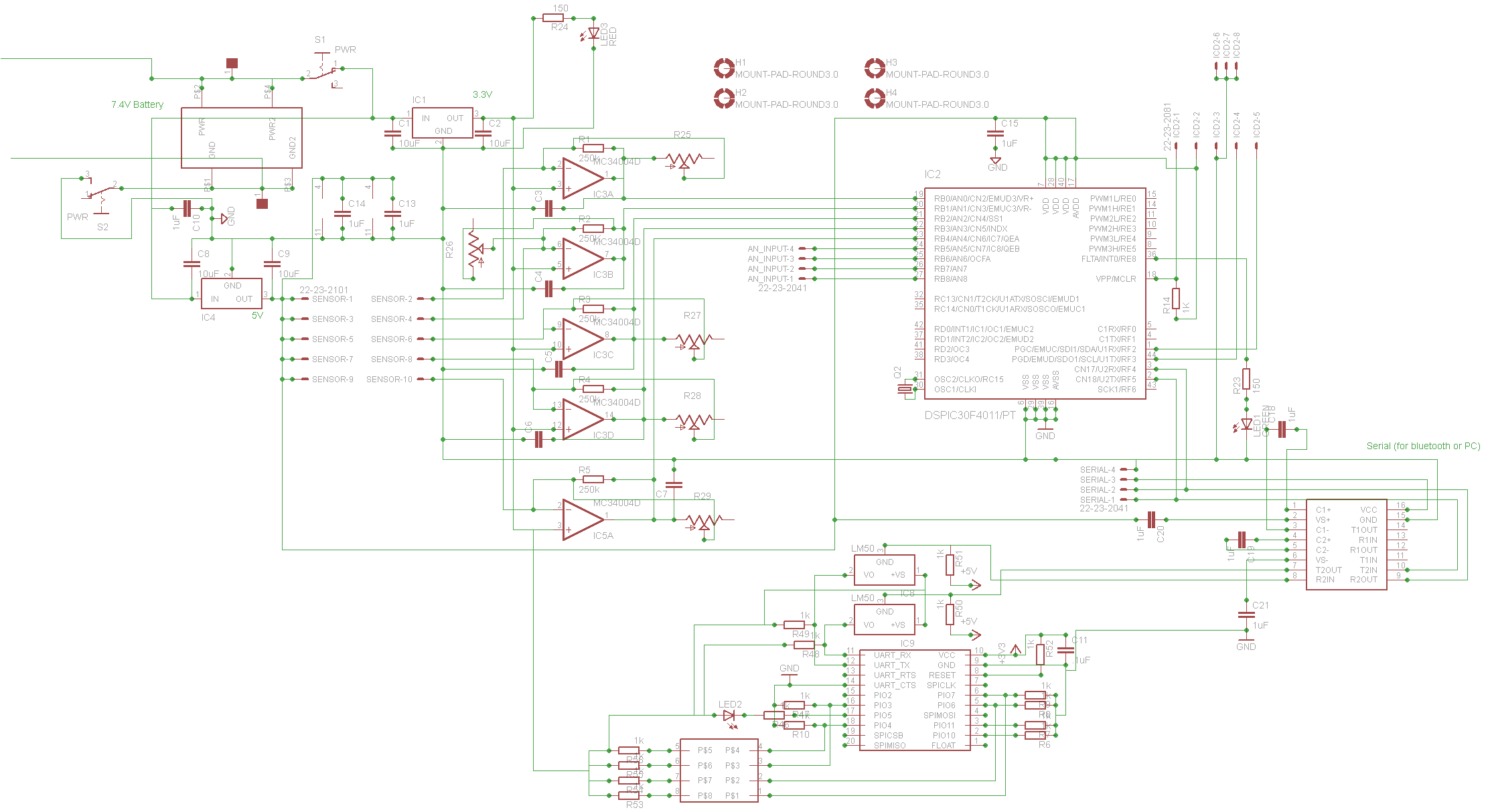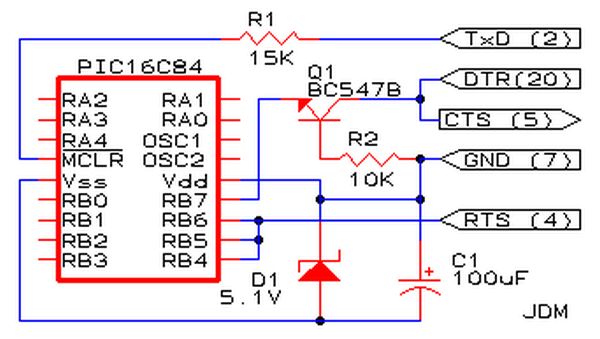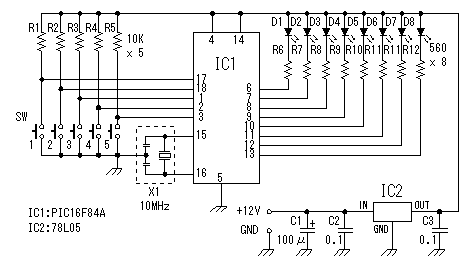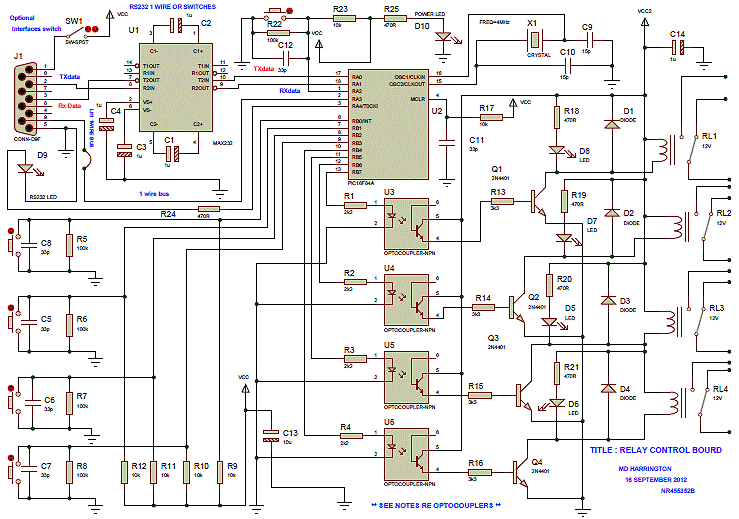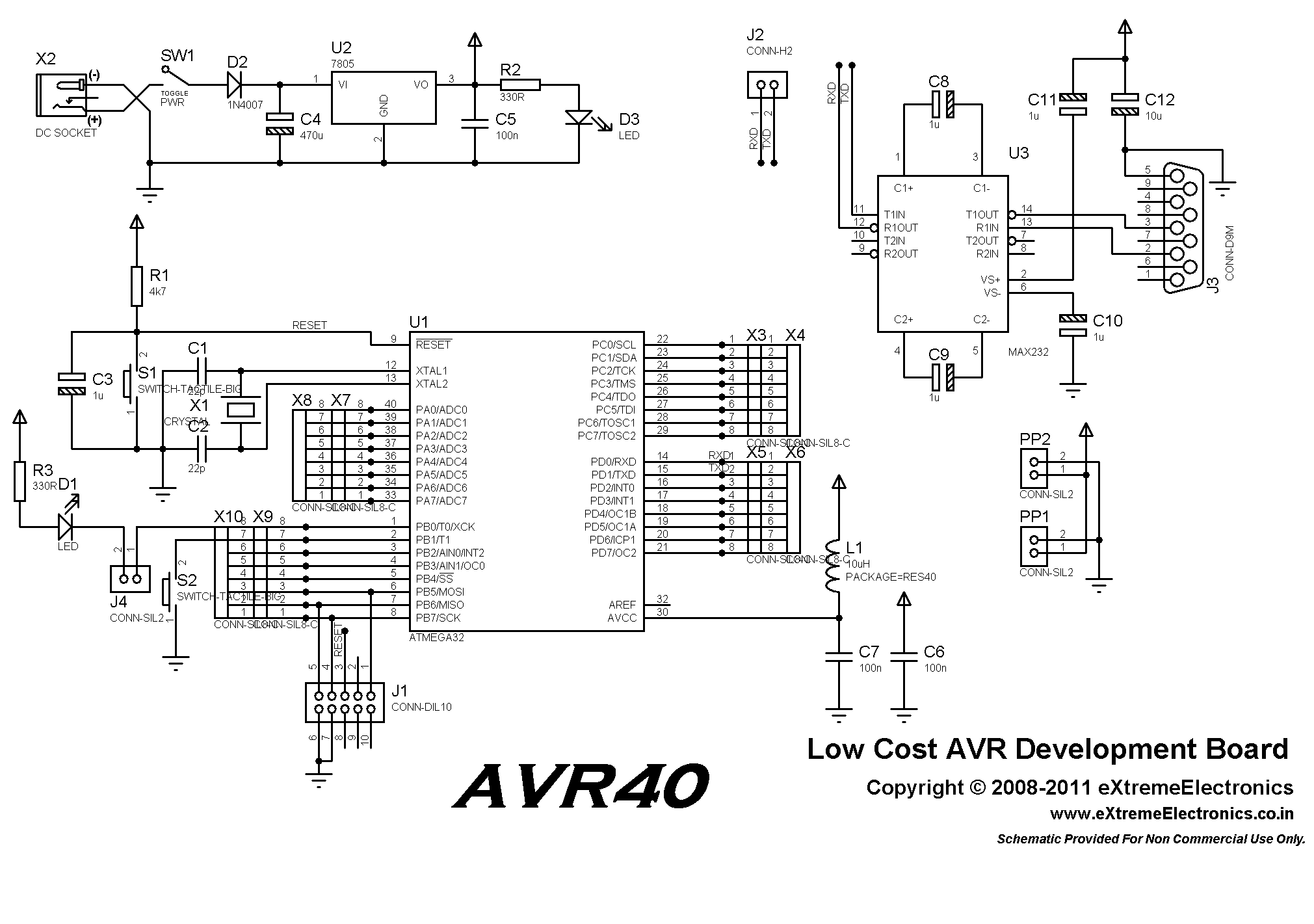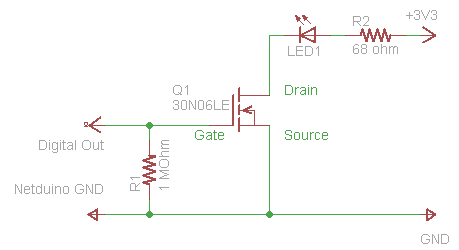
8 Pin PIC Development Board
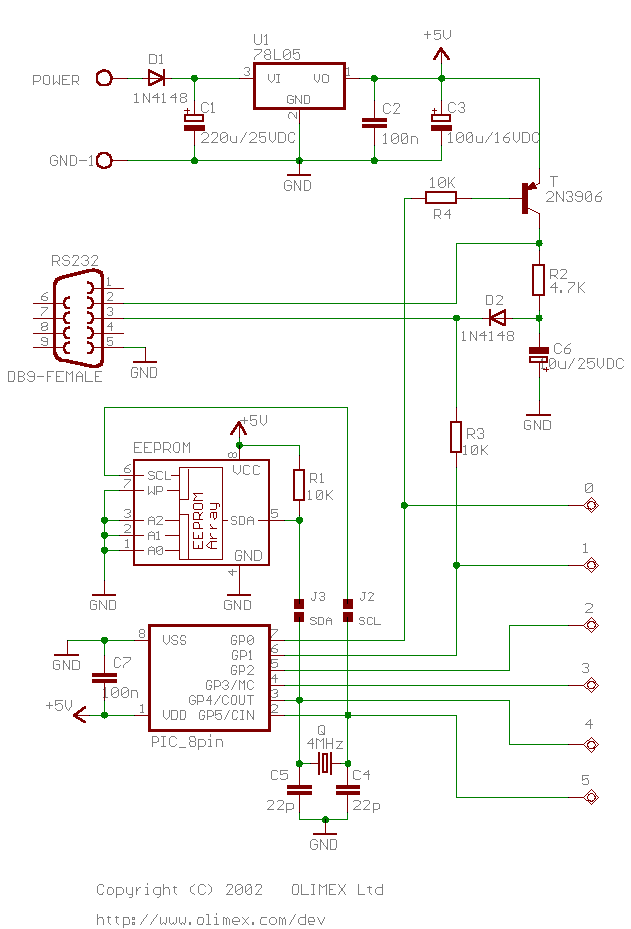
Prototype board designed for 8-pin PIC microcontrollers featuring a 4 MHz ceramic resonator, an external 8K EEPROM, a power supply circuit, and an RS232 port. It includes two small holes for soldering DC power lines (Vdd/Gnd), compatible with voltages above 7 volts, which the 78L05 voltage regulator will manage. This board serves as an excellent test bed for various projects. Please note that there is no ICSP/ICD port available; users can either create their own ICSP port or remove the chip for programming and then reinsert it into the socket. Additional specifications include FR-4 material, a thickness of 1.5 mm (0.062"), a green solder mask, and white silkscreen for component labeling. The dimensions are 43x81 mm (1.7x3.2"). The voltage regulator used is the 78L05, accompanied by filtering capacitors for stability. It features a stable 4 MHz ceramic resonator, an I2C EEPROM (24C08 DIL8), a microcontroller socket, and an RS232 DB9 female connector with an associated RS232 interface circuit. An extension slot with 6 pins is provided for GPIO0-GPIO5, with a grid spacing of 100 mils and four mounting holes measuring 3.3 mm (0.13").
The prototype board is engineered to facilitate the development and testing of applications using 8-pin PIC microcontrollers. The integration of a 4 MHz ceramic resonator ensures stable clock frequency essential for microcontroller operation. The external 8K EEPROM (24C08 DIL8) supports I2C communication, allowing for data storage and retrieval, which is pivotal in applications requiring non-volatile memory.
The power supply section is designed to accept a broad range of input voltages, with the 78L05 voltage regulator providing a regulated output of 5 volts. This feature is crucial for ensuring that the microcontroller and other components receive a stable voltage, enhancing reliability during operation. The inclusion of filtering capacitors further stabilizes the power supply, reducing noise and voltage fluctuations that could affect performance.
The RS232 port, facilitated by a DB9 female connector, enables serial communication with other devices, making it suitable for debugging and data exchange. The RS232 interface circuit ensures compatibility with standard serial communication protocols, allowing for versatile application in various projects.
The design incorporates an extension slot for GPIO0-GPIO5, providing additional flexibility for connecting peripherals or sensors, while the grid spacing of 100 mils allows for easy integration with other prototyping boards or components. The board's dimensions and mounting holes facilitate convenient placement in various enclosures or test setups.
Overall, this prototype board combines essential features and components to create a robust platform for prototyping and experimenting with 8-pin PIC microcontrollers, making it an invaluable tool for engineers and hobbyists alike.Prototype board for 8 pin PIC microcontrollers with 4MHz ceramic resonator, external 8K EEPROM, power supply circuit, and RS232 port. Two small holes for for soldering in two DC power lines (Vdd/Gnd): anything above 7 volts will work, the 78L05 voltage regulator will take care of the rest.
This is a great test bed for many projects! Please note: There is no ICSP/ICD port. You can either wire your own ICSP port, or simply remove the chip for programming and reinsert it into the socket. FR-4, 1.5 mm (0.062"), green solder mask, white silkscreen component print Dimensions 43x81 mm (1.7x3.2") Voltage regulator 78L05 and filtering capacitors Stable 4MHz Ceramic Resonator I2C EEPROM - 24C08 DIL8 microcontroller socket RS232 DB9 female connector RS232 interface circuit Extension slot 6 pins for GPIO0-GPIO5 Grid 100 mils Four mounting holes 3.3 mm (0.13") 🔗 External reference
The prototype board is engineered to facilitate the development and testing of applications using 8-pin PIC microcontrollers. The integration of a 4 MHz ceramic resonator ensures stable clock frequency essential for microcontroller operation. The external 8K EEPROM (24C08 DIL8) supports I2C communication, allowing for data storage and retrieval, which is pivotal in applications requiring non-volatile memory.
The power supply section is designed to accept a broad range of input voltages, with the 78L05 voltage regulator providing a regulated output of 5 volts. This feature is crucial for ensuring that the microcontroller and other components receive a stable voltage, enhancing reliability during operation. The inclusion of filtering capacitors further stabilizes the power supply, reducing noise and voltage fluctuations that could affect performance.
The RS232 port, facilitated by a DB9 female connector, enables serial communication with other devices, making it suitable for debugging and data exchange. The RS232 interface circuit ensures compatibility with standard serial communication protocols, allowing for versatile application in various projects.
The design incorporates an extension slot for GPIO0-GPIO5, providing additional flexibility for connecting peripherals or sensors, while the grid spacing of 100 mils allows for easy integration with other prototyping boards or components. The board's dimensions and mounting holes facilitate convenient placement in various enclosures or test setups.
Overall, this prototype board combines essential features and components to create a robust platform for prototyping and experimenting with 8-pin PIC microcontrollers, making it an invaluable tool for engineers and hobbyists alike.Prototype board for 8 pin PIC microcontrollers with 4MHz ceramic resonator, external 8K EEPROM, power supply circuit, and RS232 port. Two small holes for for soldering in two DC power lines (Vdd/Gnd): anything above 7 volts will work, the 78L05 voltage regulator will take care of the rest.
This is a great test bed for many projects! Please note: There is no ICSP/ICD port. You can either wire your own ICSP port, or simply remove the chip for programming and reinsert it into the socket. FR-4, 1.5 mm (0.062"), green solder mask, white silkscreen component print Dimensions 43x81 mm (1.7x3.2") Voltage regulator 78L05 and filtering capacitors Stable 4MHz Ceramic Resonator I2C EEPROM - 24C08 DIL8 microcontroller socket RS232 DB9 female connector RS232 interface circuit Extension slot 6 pins for GPIO0-GPIO5 Grid 100 mils Four mounting holes 3.3 mm (0.13") 🔗 External reference
